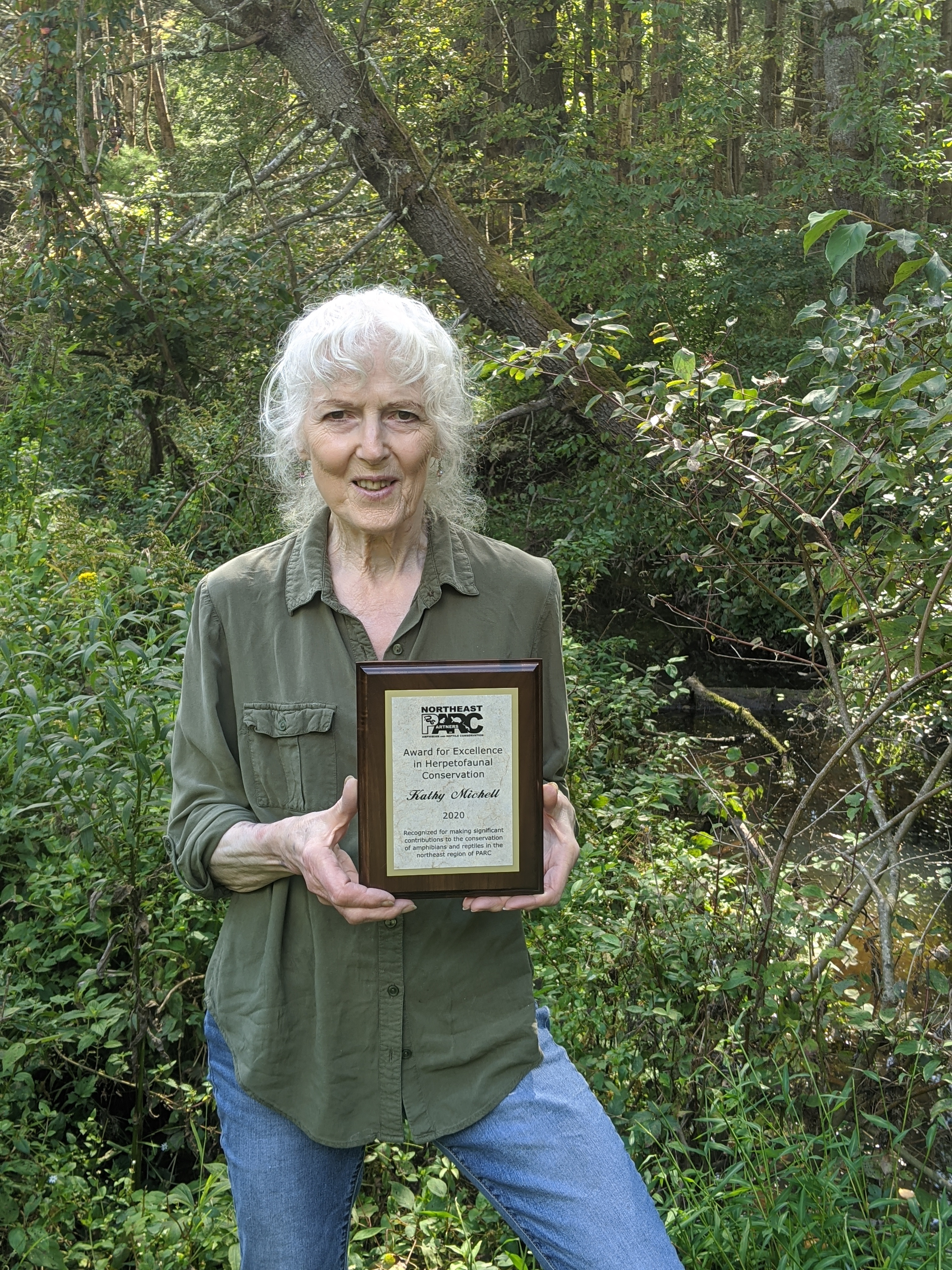Kathy Michell Wins 2020 NEPARC Award for Excellence in Herpetofaunal Conservation
NEPARC
This Award is presented by Northeast Partners in Amphibian and Reptile Conservation (NEPARC) to recognize an individual who has made significant contributions to conservation of amphibians and reptiles in the northeast region of PARC. The award recognizes someone who has worked with partners to make significant achievements for conservation of herpetofauna by preventing loss of species or their habitats or has educated others to further the PARC mission.

In terms of herpetofauna conservation, Kathy Michell is the whole package. She has devoted a lifetime to protecting herps at every level, from micro to macro. As a veteran wildlife rehabilitator specializing in reptiles, including venomous snakes, she has not only saved and returned countless animals to the wild across two states, but has also trained hundreds of rehabilitators now populating the region. At the landscape level, she has deployed her expertise as a field biologist at every opportunity—professionally, personally and as a volunteer—in the pursuit of habitat preservation, even purchasing critical local wood turtle nesting habitat.
Kathy never misses an opportunity to collaborate on behalf of conservation. Since 1997 she has been a member and contributing author of the U.S. Fish & Wildlife Service Timber Rattlesnake Conservation Action Plan. Working with NYSDEC, she has done surveys for bog turtles, rattlesnakes and other herps, was a top contributor of location data to the New York State Herp Atlas, and even helped buffer public/herp interaction as a nuisance timber rattlesnake responder. As a professional environmental surveyor, she has been conducting ongoing experimental research on exclusion and silt fencing in construction areas to prevent mortality in amphibians and reptiles and to allow unimpeded amphibian migration. On utility construction jobsites she partnered with the companies to build additional habitats and enhance and maintain existing habitats which had been degraded; she designed them, supervised the construction and did volunteer follow-up surveys to document their success. She has assisted several northeast states over the past 25 years (NY, NJ, PA, VT, NH) in locating timber rattlesnake dens by surgically implanting and attaching external transmitters, a technique she developed as a volunteer, in many cases providing transmitters. She shares her nearly thirty years of reptile rehabilitation experience by mentoring new rehabbers, conducting training at regional and national conferences and workshops, and by helping rehabbers across the US and Canada successfully rehab turtles over the internet. On a local level, she builds consensus as a tireless crusader for municipal zoning that protects wildlife, and is a deep well of community programming on herps.
Kathy’s research on construction area exclusion and silt fencing resulted in a written BMP for the regional NYSDEC office on fencing, with additional documents to come. The many life saving techniques she’s developed for seriously injured turtles, coupled with the many rehabilitators she’s mentored now practicing them across the region (some populating states formerly devoid of competent reptile rehabilitation), have greatly increased the survival odds of injured animals and returned breeding adults to their populations. Her time lapse camera studies of timber rattlesnake dens (first presented at a New Hampshire NEPARC meeting), and her transmitter attachment technique are methods now used by many researchers. As chair of her local zoning rewrite committee she’s responsible for expanding wetland buffers and mapping significant wildlife habitats for zoning protection. And the long reach of her educational influence is unimpeachable, whether through scientific publication or community program.
Kathy has never received any formal recognition for her contributions to this field. She has broad a skill set to apply to herp conservation. She is a biologist, naturalist, EMT, surveyor, teacher and innovator, and she brings all that and a superb, rational mind to her work—which is to say, her life.
Kathy has been studying reptiles and amphibians since she was a child out in the woods, fields and streams. Her understanding of these animals and their natural history is thoroughly grounded in observation, not simply academia. As an EMT and a biologist, she has a much deeper and broader understanding of the mechanics of their bodies than most, and more chronological and breadth of experience working directly with them in every type of situation. Her ability to speak to and work with both governmental and corporate/industrial factions makes her an effective bridge between two often opposing sides. Aside from family, there is almost nothing that consumes her time more than her tireless drive to help these creatures.
Kathy has been an active member of NEPARC since its inception, and still participates on the Emerging Diseases Working Group.
